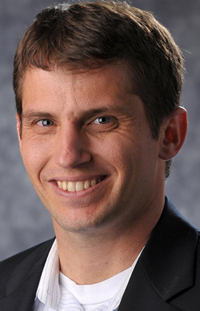
When one out of every 100 children born in this country is diagnosed with autism, treatment for those children requires as much attention as the diagnoses.
“Ten or 20 years ago we were lucky to diagnose a child by age four or five,” says Joshua Diehl, assistant professor of psychology at the University of Notre Dame, who specializes in developmental disorders, with an emphasis on autism spectrum disorders and dyslexia.
“Now we’re able to reliably diagnose as early as 18 months, with some studies trying to pinpoint it within six months. Our ability to diagnose earlier – regardless of the treatment – means earlier intervention and better outcomes,” says Diehl.
As with many developmental disorders, the diagnosis of “autism” can mean something different for each child. Autism disorders fall within a spectrum of behaviors, some more serious and difficult to overcome than others.
“The signature characteristic for all children with autism is difficulty communicating. Many of the children desire to be social, but comprehension is a barrier for them. They don’t always understand social conventions or norms,” Diehl says.
Helping children with autism break through those barriers and communicate more effectively is the focus of Diehl’s current research projects and therapies, all of which are behavior-based.
“In a simple conversation, there are gestures, facial expressions, words and voice inflection – all of which come naturally for most people,” Diehl explains.
“Children with autism can accomplish these behaviors individually, but putting them together is difficult for them. These intuitive behaviors need to be taught to them.”
In therapy sessions with children with autism, Diehl focuses on breaking down those individual behaviors and teaching communication piece by piece.

One method is through the use of “Nao,” a robot that is programmed to simplify various communication behaviors like gestures and facial expressions, and teach children with autism how to use and understand them.
“The most important part of social interaction is understanding what’s being said and being able to be understood,” Diehl explains.
“If we can bridge this social gap, it will open up so many doors for children with autism and help them in all aspects of their lives.”
Most current research studies are focused on early intervention, but there still is a need for intervention for older children with autism.
“We need to focus on services and therapies for children beyond the first few years of life,” Diehl says. “What can we do for a child with autism who’s 11, 12, even 18? These parents are still looking for ways to help their children.”
One of Diehl’s studies is geared toward older children and adolescents with high-functioning autism or Asperger syndrome, and focuses on language comprehension.
“We are trying to understand how children with autism spectrum disorders perform on a range of tasks measuring language comprehension abilities, and compare them with typically developing children and adolescents.”
Diehl stresses the importance of continuing research in order to know what works for which children, and how to use that information for effective treatment plans.
“In an ideal scenario,” according to Diehl, “children would receive individualized treatment for areas in which they’re struggling, and have those tailored treatments continue throughout their lives.”
Contact: Joshua Diehl, 574- 631-1371, joshua.diehl@nd.edu